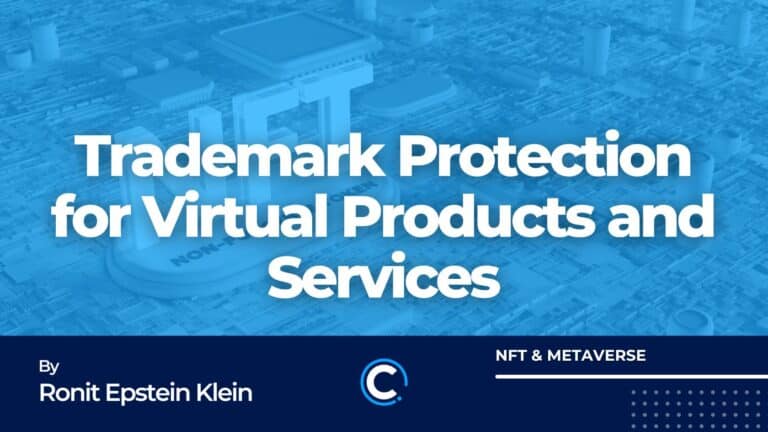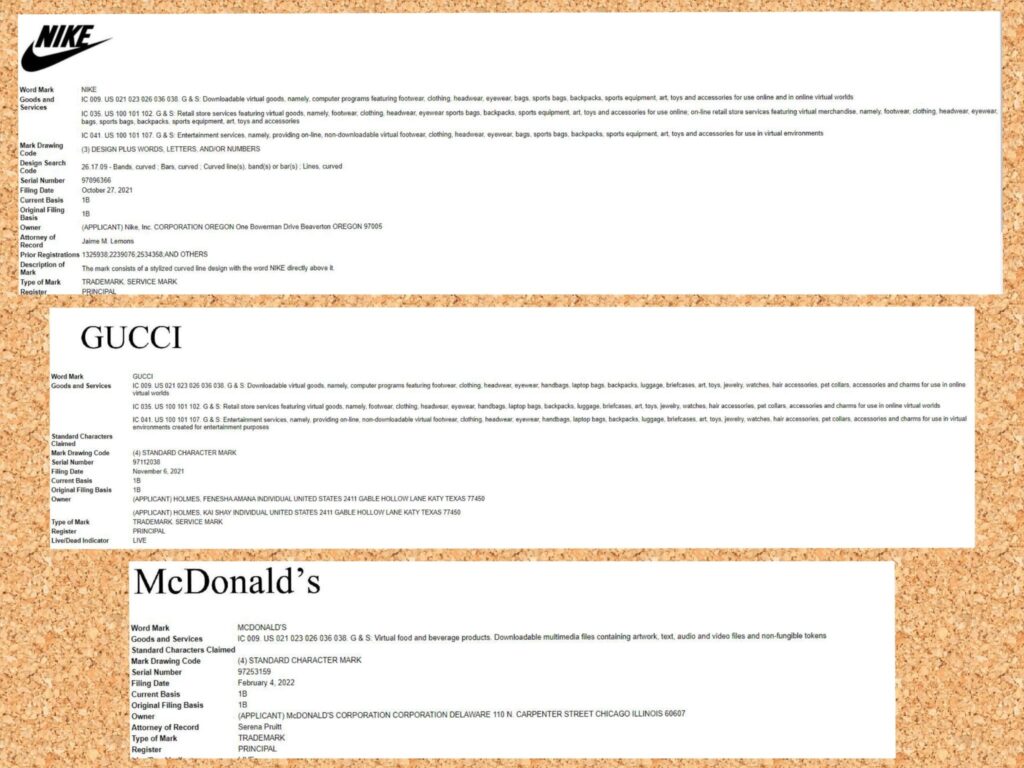
In recent times, leading brands such as Nike and McDonald’s have filed for trademark protection in relation to NFTs and virtual products and services.
Why did they do this? And how does all this relate to your brand?
Let’s start with the NFTs that everyone is talking about.
NFT (Non-Fungible Token) is a protocol based on blockchain technology that establishes a connection between a digital asset and its owner, allowing the owner to prove his ownership of the asset. The key feature of the NFT is that it cannot be duplicated. Today you can create NFTs of almost anything you can think of: images, animation, avatar skins, video clips, music, documents, and more.
And what is the Metaverse?
A combination of the words META and UNIVERSE, namely, a virtual universe where, according to certain predictions, a large part of our lives will take place. Common spaces that will connect and merge our virtual existence and our physical existence. Some call it “the next Internet”, but in a certain sense, some of these aspects already exist today as the gamers among us are aware.
How does everything connect to brands and trademarks?
The classic example is digital clothing items. In almost all virtual universes that exist today in the gaming world (Fortnite, Roblox, etc.) your characters have the option of purchasing clothing and accessories. Why wouldn’t this clothing be branded? The big companies have already thought of this. Gucci for one has already sold an NFT version of their bag for more than $4,000 (more than the price of an actual, physical bag!). Nike and Adidas have followed the same path for trademark protection of their digital assets.
The registration of the brands is of course not limited only to clothing items.
Many other companies in diverse fields (cosmetics, food, etc.) have also submitted trademark applications to protect their virtual goods. It seems that globally recognized entities anticipate that the best way to protect their brand name and their logo in the virtual world is to register a trademark.
Registering a trademark in relation to your virtual products
Registering a trademark in relation to your virtual products gives you the exclusive right to use the brand name in relation to your virtual products, your NFT, and to other cryptographic assets. Of course, this will increase your customers’ confidence in the brand and make you a brand owner who advances with technology.
If you have an established brand, consider registering it as a trademark that covers virtual products. This can also be done as a proactive measure to prevent competitors and hijackers from grabbing your brand name in relation to virtual goods or services.












